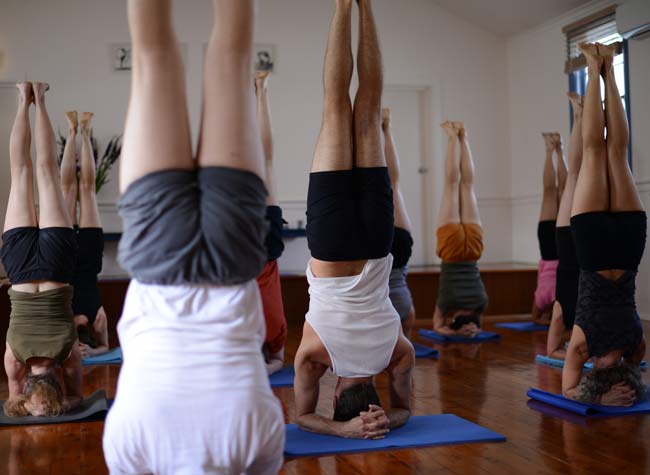There are no products in the cart
Inverted Postures in Iyengar Yoga
Pixie Lillas explores the reason behind the emphasis in Iyengar Yoga on inverted postures such as Sirsasana (Headstand) and Sarvangasana (Shoulderstand)
Anyone practising Iyengar yoga will have noticed the importance given to the various inverted postures and how these postures form a part of every sequence in every class. Some students are pleased and enjoy them; others struggle with finding the right alignment for their neck or shoulders and perhaps wish there were less of this particular type of asana.
Why place such emphasis on these poses?
Headstand and Shoulderstand are considered by Mr Iyengar as the centrepieces of yoga practice. They are often somewhat quaintly referred to as the

Sirsasana and Sarvangasana are generally practised together as part of the same sequence. It is possible to only do Shoulderstand but it is not recommended that one practise Headstand on its own. It needs the balancing effect of Shoulderstand to keep harmony in the body. At the core of yoga practice and philosophy, one always comes to this question of balance. If we do something stimulating to the system we need to counter it with something cooling. In India, spicy food is often accompanied by yoghurt to cool its fire. It is thought that the energy received from certain postures will be longer-lasting and more beneficial if harmony and equilibrium are valued and maintained.
Do not practise inversions if you are menstruating, have high blood pressure, an ear infection or suffer from detachment of the retina. It is best to consult with your teacher if you have had any previous neck injuries or problems or have a specific question concerning the inverted postures.
Otherwise, learn the foundation postures well: tadasana, dog pose (adho mukha svanasana), standing poses and sitting postures which will all prepare your arms, spine and legs for Sirsasana and Sarvangasana. At that point, you will be ready to enjoy the rewards offered by the regular practice of these asanas.

